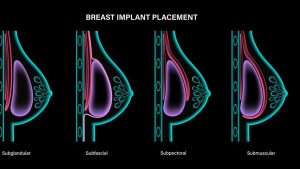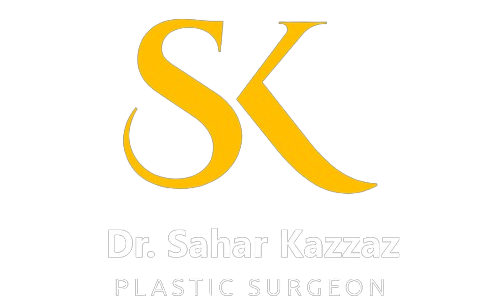A Breast augmentation, is also called breast enlargement or breast enhancement. It is one of the most commonly performed plastic surgery procedures. There are many reasons to be so common, one being a boost in self-esteem and self-confidence. Women often report fitting better into clothes and feeling more comfortable with their bodies.
Breast hypoplasia is defined by an insufficient volume of the breasts in relation to the patient’s morphology. It can be the consequence of insufficient development of the gland at puberty or appear secondarily by loss of glandular volume following pregnancy, breastfeeding, weight loss or hormonal disturbances.
Currently, patients’ requests are very specific – and in most cases very different. Some patients wish a significant size enlargement. Others prefer a minimal fullness as the lifting or upper breast fullness is more important to them. That’s need from surgeon to have a long conversations with the patients in order to explain to them which desires are useful and above all, which are reasonable.
Breast Augmentation
Today with modern surgical techniques, women now have more augmentation options than ever to alter the breasts’ appearance safely like
1.Breast Enlargement with Breast Implant
2.Breast Enlargement with Fat Grafting (Enriched with PRP or Mesenchymal Stem Cells)
3.Hybrid Breast Augmentation (Composite Breast Augmentation- Implant & Fat).
4.Mini Breast Augmentation – Mini Boob Job
Consultation with Dr. Kazzaz about your breast enlargement:
As Dr. Kazzaz is renowned to utilizing cutting-edge technologies, for more than a decade she use to offer the women who consult about the breast a complementary Dimensional breast volumetry imaging system (Vectra®) analysis and simulation. This advanced tool allows patients to better comprehend and visualize their desired outcomes.
Furthermore, Dr. Kazzaz provides a range of approaches for breast augmentation, including natural breast augmentation using high quality fat transfer enriched with adipose-derived mesenchymal stem cells or platelet-rich plasma (PRP), as well as a wide selection of implant shapes and sizes. She is also well-versed in the hybrid breast augmentation technique, which combines fat transfer with a small implant to achieve the most modern and desired results. This approach allows for customization based on patient preferences, body shape, and minimal drawbacks associated with breast implants.

Breast Augmentation with Breast Implant
One of the most well-known and widely adopted methods of breast augmentation is with breast implants. These implants typically consist of a silicone outer shell filled with either saline solution or cohesive silicone gel. Widely silicon gel is more favorable for cosmetic reason and long-term result stability . Some advantages to consider include:
- Customizable size and shape: Breast implants offer a wide range of sizes, shapes, and profiles, allowing for an individualized approach tailored to your desired outcome.
- Long-lasting results: Modern implants are designed to be durable, with a low risk of rupture or leakage if maintained properly.
- Immediate enhancement: The results are visible immediately after surgery, offering instant satisfaction.
Potential risks and complications:
Like any surgical procedure, breast implants come with inherent risks such as infection, scarring, implant related late complications like capsular contracture, late seroma and possible implant-related issues. For more information about safety of breast implant– Read:
https://www.avanceplasticsurgery.com/wp-content/uploads/2020/10/Breast-implant-safety.pdf
Breast Implant Placement?
We understand that undergoing breast augmentation surgery can raise various questions and concerns. One essential aspect of this procedure is the placement of the breast implants in the breast pocket. The decision regarding the proper placement technique is typically made by the surgeon who will consider several factors, including:
- Patient’s individual anatomy and how it affects implant positioning.
- Your existing breast tissue and its thickness
- Your lifestyle and the level of physical activity you engage in (very important)
- Desired outcome (breast size and shape)
- Any previous surgeries or medical conditions you may have.
Surgeon expertise and experience in assessing individual patient needs play a crucial role in determining the most appropriate breast pocket location & who can provide personalized guidance based on your specific situation for optimal results.

Subglandular placement involves positioning the implant beneath the breast tissue but above the chest muscle. It may be suitable for patients with adequate natural breast tissue and who have mild sagginess that the implant will be able to lift it.
Subpectoral placement involves positioning the implant beneath both the breast tissue and the chest muscle. This technique may be recommended for patients with minimal breast tissue who desire additional coverage and support, providing more natural-looking results.
Subfascial placement Subfascial placement refers to the technique of positioning a breast implant beneath the fascia layer, which is a thin tissue that separates the muscle and breast tissue. This method is sometimes used based on patient anatomy or surgeon preference. It offers certain advantages over submuscular and subglandular placements, as it eliminates their drawbacks. However, it is important to note that subfascial placement may not be suitable for all patients.
Dual plane placement (commonly used) involves a combination of submuscular and subglandular placement, with the upper portion of the implant covered by the muscle and the lower portion supported by the breast tissue. This technique may suit patients with certain breast shape or volume differences and highly prefer for patient with mild sagginess or breast tissue atrophy due to previous pregnancies or weight loss.
Breast Implant Settling :
It is a common occurrence and typically happens a few months after surgery during this time the implant will gradually adjust and settle into their final position within the breast pocket initially the patient may notice some swelling making the breast appear larger and more projected than final result however this is entirely normal and can the surgeon inform the patient about it at consultation time.
In some cases, the surgeon may even place the implants slightly higher than what it needed, and this is the strategy is to allow the implant to settle into a natural position on the chest wall over time rather than a true being too low or causing bottoming out however that decision it depends on the quality of breast skin and tissue and also the type, size and nature of the breast implant itself.
